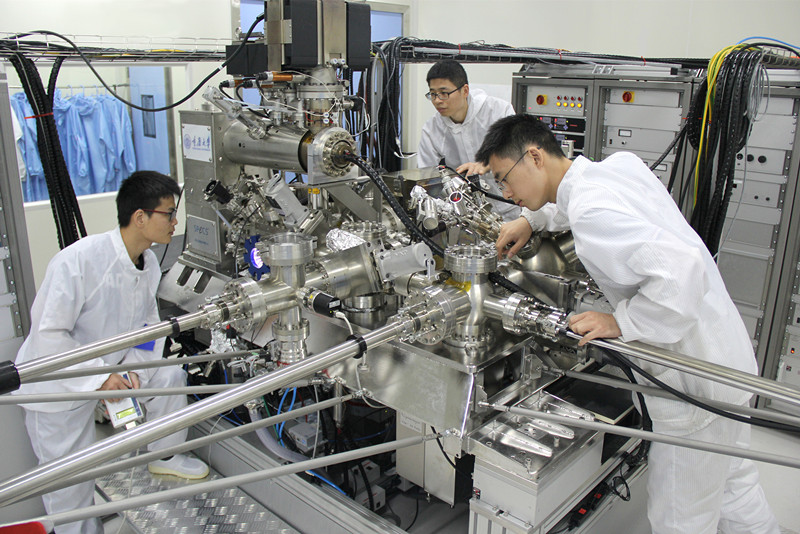In collaboration with Professor Zheng Changxi from Monash University of Australia, the team led by Professor Tang Wenxin from the School of Material Science and Engineering of Chongqing University has for the first time discovered and identified the in-plane ferroelectricity and phase-change process by developing dip-angle high-resolution in-situ low-energy electron microscope. The related research paper titled “Room-temperature in-plane ferroelectricity in van der Waals In2Se3” has been formally published in Science Advances, a sub-journal of Science, with Chongqing University as the first organization and the corresponding organization. The research achievement has been supported by the earmarked funds for major scientific research instrument and equipment of the Natural Science Foundation of China and the earmarked funds for basic scientific research operation of colleges and universities allocated by the central government.

The Van der Waals 2D material has a very promising application prospect in the future. The inherent ferroelectricity of the stratified material can be used for the NV storage and low-power electronic and photo-electron switches. There have been very few research papers on this 2D ferroelectric material. During the research, Professor Tang Wenxin and the team used the dip-angle high-resolution low-energy electron microscope to capture for the first time the in-plane ferroelectric phase on the 2D materialβ-In2Se3 surface, as proposed by related theories. After that, they used different methods to directly verify this finding in collaboration with partners. Theβ-In2Se3 ferroelectric phase is stable at the ambient temperature. The phase change temperature as measured using the dip-angle high-resolution low-energy electron microscope is as high as 200℃. Recently, Professor Tang Wenxin and Professor Harald Rose, an electron microscope theorist, have been collaborating on further research and have theoretically revealed that the in-plane ferroelectric domain imaging micro-physical mechanism may possibly come from the modulation of electronic phase as a result of low-energy electron scattering in the molecular field of the ferroelectric domain, rather than the phase difference resulting from the upper and lower interface reflection. It is predicted that the ferroelectric domain contract ratio is inversely proportional to the kinetic energy of the incident electron. It is one of the unique functions of the low-energy electron microscope. The related work is currently being reorganized. In the research, Doctoral Students Yu Lei and Zhu Lin worked together with Li Meng, a young lecturer, and they played a very important role in measuring and developing this new method.

Link of the full paper:
http://advances.sciencemag.org/content/4/7/eaar7720

